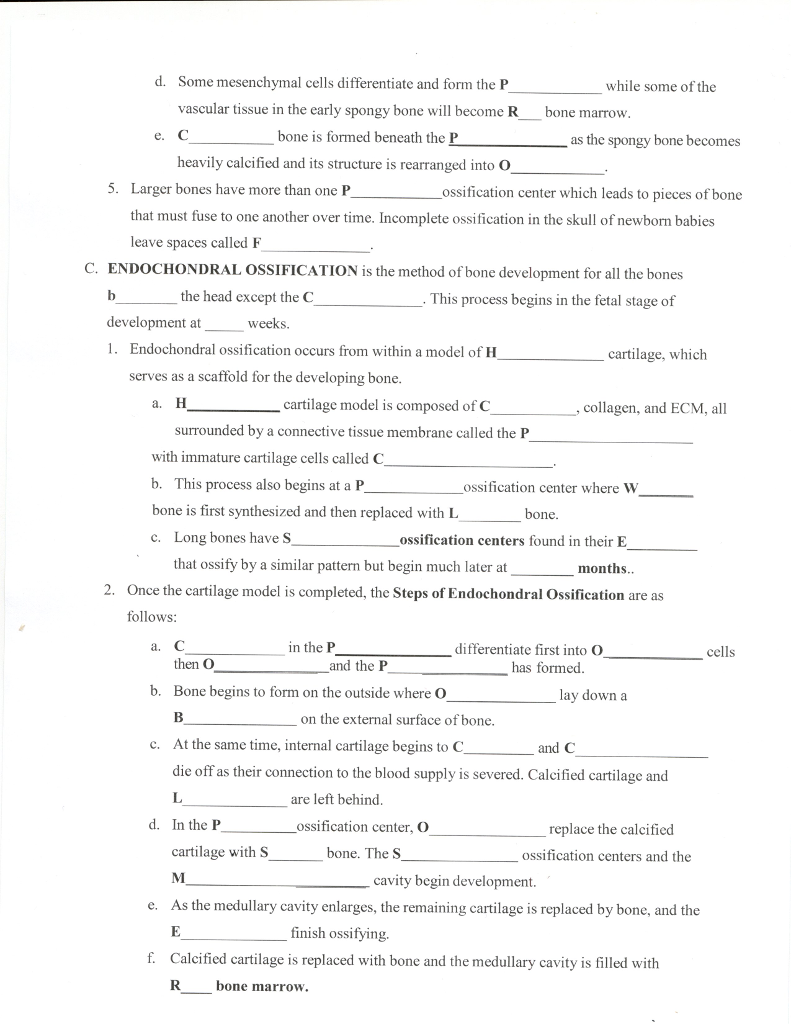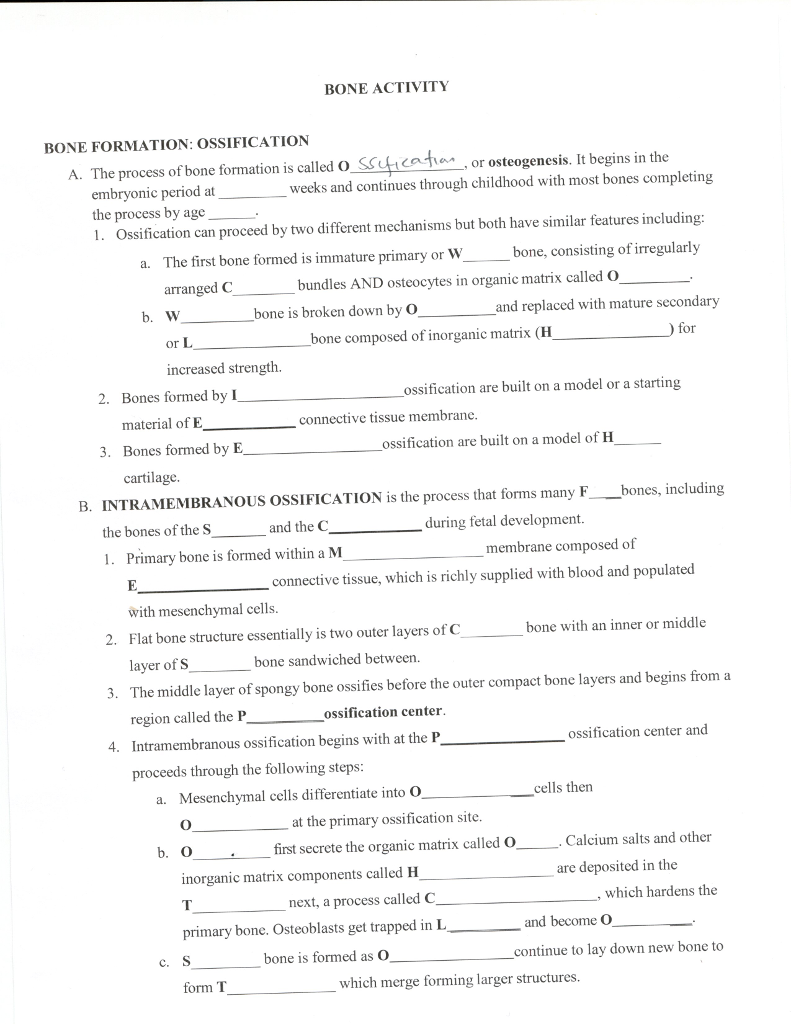Which of the Following Is Not Formed by Intramembranous Ossification
Which of the following are formed by intramembranous ossification. Also which bone is not formed via Intramembranous ossification.

6 3 Bone Formation Ossification Diagram Quizlet
Clusters of osteoblasts form osteoids that become mineralized 2.

. Intramembranous ossification is a type of two essential processes during fetal development in the skeletal system where bone tissue is created. Long and curved bones which makes rib cage are known as ribs. All of the following are true of intramembranous ossification except which one.
The following hormone is NOT produced by the ovaries. Most bones in the body are formed by intramembranous ossification. Process involves ossification of a mesenchymal bone template.
Stages of Intramembranous Ossification Results in the formation of cranial bones of the skull frontal perietal occipital and temporal bones and the clavicles. Endochondral ossification is the process of bone development from hyaline cartilage. What are the 2 types of ossification.
Bones at the base of the skull and long bones form via endochondral ossification. All of the following bones develop by intramembranous ossification except. Which bone is formed through endochondral ossification.
Osteoblasts differentiate with mesenchymal connective tissue 3. What happens to the chondrocytes during endochondral ossification. A Estrogen B Progesterone.
The flat bones of the face most of the cranial bones and the clavicles collarbones are formed via intramembranous ossification. Which of the following bones is are formed by intramembranous ossification. His options to the question um similarly the ribs which are type of flat bone form via and no con droll ossification as well.
You will also know about the term. Which of the following is not true of intramembranous ossification--occurse within a CT membrane--begins about the eighth week of embryonic development--osteochondral cells migrate to centers of ossification and become osteoblasts--lamellar bone is. Spicules of bone radiate out from the ossification centers 4.
Um so that this leaves thief flat bones of the cranium Um the flat bones of the cranium form via intra member. Femur bone is longest bone in the human body. Which bone is not formed via intramembranous ossification.
The following are major steps in the process of intramembranous ossification 1. All of the following bones develop by intramembranous ossification except. There are twelve ribs found in human.
Endochondral ossification occurs within fibrous connective tissue membranes. It is a process of bone fractures healing. The flat bones of the skull and face form this way.
During endochondral ossification hyaline cartilage is broken down and replaced with bone. Endochondral ossification takes much longer than intramembranous ossification. Unlike endochondral ossification which is the other process by which bone tissue is created during fetal development cartilage is not present during intramembranous ossification.
During intramembranous ossification compact and spongy bone develops directly from sheets of mesenchymal undifferentiated connective tissue. Unlike Endonchronal ossification where bone is created in fetal development but cartilage is not. All of the bones of the body except for the flat bones of the skull mandible and clavicles are formed through endochondral ossification.
All bones formed this way are flat bones An ossification center appears in the fibrous connective tissue membrane Bone matrix is secreted within the fibrous membrane. There are two types of bone ossification intramembranous and endochondral. Process begins before birth and.
Instead cartilage serves as a template to be completely replaced by new bone. Um so the metatarsals and the femur are both types of long bone and long bone develops via endo contre la ossification so we can remove them. It is formed by the process of endochondral ossification.
Process creates a medullary cavity. Csome parts of the mandible. Intramembranous ossification is the process of bone formation directly from mesenchymeIn this guide I will discuss the steps or process of intramembranous ossification with a labeled diagram.
Endochondral ossification leads to the formation of the clavicles and cranial bones. Cartilage is not formed by intramembranous ossification. In endochondral ossification bone develops by replacing hyaline cartilage.
The following bone forms via the intramembranous ossification pathway during embryonic and fetal development. Mesenchymal cells aggregate The correct order for these events is. Intramembranous ossification the source of most of the flat bones is so called because it takes place within condensations of mesenchymal tissue and not by replacement of pre-existing piece of.
If you are interested in learning the process of intramembranous ossification in detail you may continue this guide. The flat bones of the. Esome parts of the clavicle.
Femurs on end distal end is articulating in knee joint and other proximal end is articulating in acetabulum in pelvic bone. Cartilage does not become bone.

Solved Bone Activity Bone Formation Ossification A The Chegg Com

6 4 Bone Formation And Development Anatomy Physiology

Solved Bone Activity Bone Formation Ossification A The Chegg Com
Comments
Post a Comment